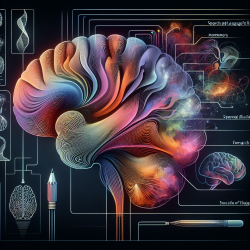Understanding Spectral Illusions and Memory Loss in Speech-Language Pathology
The field of speech-language pathology is ever-evolving, with new research continuously enhancing our understanding and approaches to therapy. One intriguing study, "History of a Case of Spectral Illusions with Subsequent Loss of Memory of Words and Names, with the Appearances on Dissection," provides valuable insights into the intersection of neurological phenomena and speech-language disorders.
Key Insights from the Research
Authored by James Craig in 1836, this study explores a unique case where spectral illusions were followed by a significant loss of memory for words and names. While the research is historical, its implications are profound for modern-day practitioners. It highlights the intricate relationship between cognitive functions and language, urging us to consider neurological underpinnings when addressing speech and language disorders.
Implications for Practitioners
For practitioners, understanding the neurological basis of speech and language disorders is crucial. This study serves as a reminder of the importance of comprehensive assessments that consider both cognitive and linguistic factors. Here are a few ways practitioners can enhance their skills based on the findings:
- Holistic Assessment: Incorporate assessments that evaluate both cognitive and linguistic abilities to better understand the root causes of speech and language difficulties.
- Interdisciplinary Collaboration: Work closely with neurologists and other healthcare professionals to gain a deeper understanding of the neurological aspects of speech disorders.
- Continued Education: Stay informed about the latest research and advancements in the field to provide evidence-based therapy.
Encouraging Further Research
While this study provides foundational knowledge, it also opens the door for further research. Modern technology, such as neuroimaging, can offer more detailed insights into the brain's role in speech and language processing. Practitioners are encouraged to engage in or support research initiatives that explore these areas.
Conclusion
As we continue to advance in the field of speech-language pathology, integrating historical insights with modern research is essential. By doing so, we can develop more effective therapeutic strategies that address the complex nature of speech and language disorders.
To read the original research paper, please follow this link: History of a Case of Spectral Illusions with Subsequent Loss of Memory of Words and Names, with the Appearances on Dissection.










